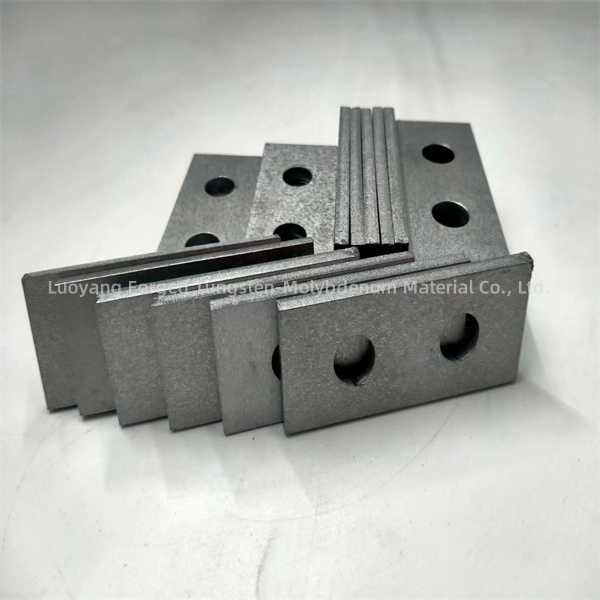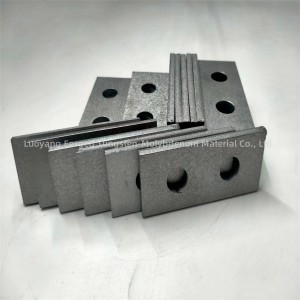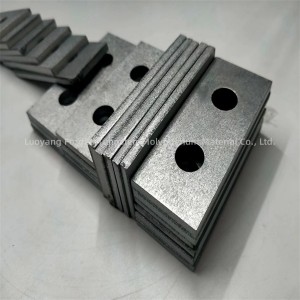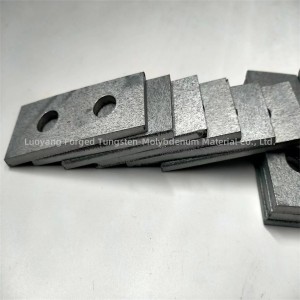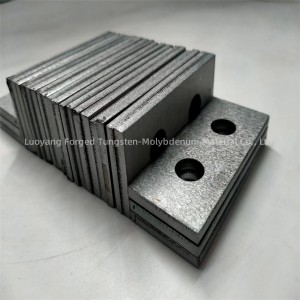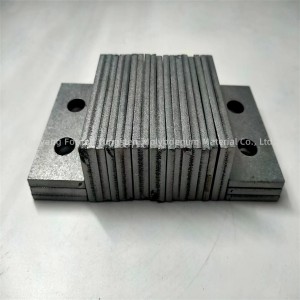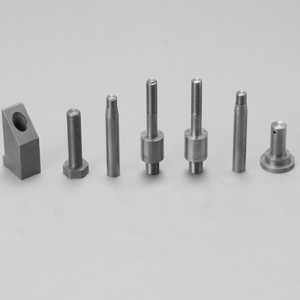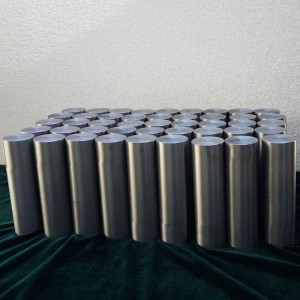pure molybdenum plate with holes molybdenum machined part
Molybdenum plate, also known as molybdenum plate, is a flat piece of molybdenum metal commonly used in various industrial applications due to its excellent properties. Molybdenum plates are known for their high melting point, excellent thermal conductivity and corrosion resistance, making them suitable for use in high temperature environments and corrosive chemical environments.
These sheets can be used to produce heating elements, radiation shields, sputtering targets and other specialized equipment. In addition, molybdenum sheets are often processed to create specific components or parts for use in industries such as aerospace, defense and electronics.
Overall, molybdenum sheets are valued for their durability, heat resistance, and ability to withstand harsh conditions, making them a key material in a variety of industrial and manufacturing processes.

Specifications for molybdenum machining may vary based on specific applications and requirements. However, some general considerations for molybdenum processing include:
1. Cutting tools: Due to the hardness of molybdenum, high-speed steel (HSS) or carbide cutting tools are usually used to machine molybdenum. Diamond tools are also used for precision machining.
2. Cutting speed and feed: Compared with other metals, molybdenum requires lower cutting speed and higher feed. This is due to its high strength and resistance to deformation.
3. Lubrication: Proper lubrication is crucial during molybdenum machining to reduce friction and heat generation. Usually water-based or oil-based lubricants are used.
4. Cooling: Effective cooling methods, such as using coolant or compressed air, are important to dissipate the heat generated during machining.
5. Tool geometry: The geometry of the cutting tool, including rake and relief angles, should be optimized for molybdenum machining to ensure effective material removal and tool life.
6. Surface finish: Molybdenum processing usually requires a post-processing process to achieve the required surface finish, because molybdenum is prone to work hardening during processing.
7. Safety Precautions: Molybdenum processing may produce fine dust or particles, so appropriate safety measures should be taken, including the use of personal protective equipment and dust collection systems.
It is worth noting that specific processing specifications may vary depending on the grade and shape of molybdenum being processed and the desired end product.

Pure molybdenum is not considered brittle. It is a refractory metal known for its high tensile strength, excellent thermal conductivity and corrosion resistance. In fact, molybdenum exhibits a combination of strength and ductility, making it suitable for a wide range of applications, including high-temperature environments and structural components across a variety of industries.
However, the brittleness of molybdenum can be affected by factors such as impurities, grain size and processing methods. In certain alloy forms or under certain conditions, molybdenum may exhibit a degree of brittleness. Therefore, the brittleness of molybdenum depends on the specific alloy, processing and environmental factors.
Overall, pure molybdenum is known for its strength and ductility and is widely used in applications requiring these properties.

Wechat:15138768150
WhatsApp: +86 15838517324
E-mail : jiajia@forgedmoly.com

